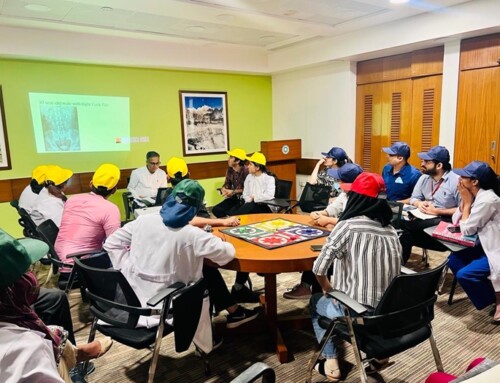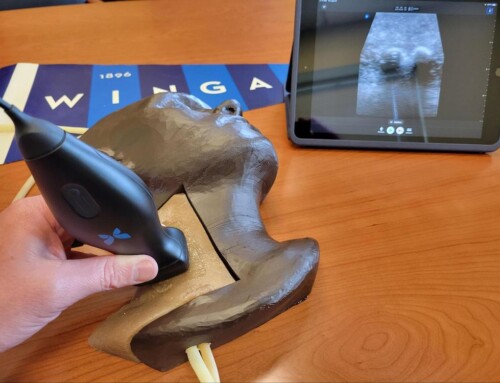The Problem
Early recognition of a patient presenting with a toxidrome is essential to providing high-quality emergency care. Learners are often first exposed to this topic, however, in one comprehensive grouping, which makes it challenging to learn the nuances that distinguish one toxidrome from another. Both learners and experienced clinicians alike often employ rote memorization (and sometimes suboptimal mnemonics) to differentiate these presentations. This can make it difficult to convert the details into long-term memory.
The Innovation
Using a board game model, this 1-hour activity allows learners to apply knowledge of toxidromes, including signs and symptoms, causative agents, and treatment, in a simulated atmosphere. Creating teams fosters a sense of healthy competition and increases recall under pressure.
Target Learners
This innovation was originally designed for medical students participating in an EM clerkship. However, it can used to teach a variety of target learners, including pre-clinical students in a classroom setting, medical students on a clerkship, or post-graduate trainees.
Group Size
The ideal group size is 2-3 learners per team. The number of teams can vary depending on the class size and available facilitators. The game has been played with up to 10 teams simultaneously (with 2 facilitators).
Materials Needed
For each team:
- 1 large sheet or cardboard with a drawing of a cartoon outline of a body. For additional flare and comic relief, add emoji heads to upgrade to “Emoji Toxidrome Challenge.”
- 1 sandwich bag of “game tiles” representing signs or symptoms:
- Mental Status
- Heart Rate
- Blood Pressure
- Respiratory Rate
- Temperature
- Pupils
- Bowel Sounds
- Skin
- 1 buzzer or bell to notify the facilitator that a team has completed the exercise

This image displays an example of the toxidrome board game, with emoji heads added to the bodies for additional flare and comic relief.

“Game tiles” are placed on the corresponding area of the body to represent the signs and symptoms present in a given toxidrome.
Description of the Innovation
- The class is divided into teams of 2-3 learners.
- It is helpful to have at least 2 facilitators to keep track of the buzzer and check tile placement.
- Each round provides an opportunity to focus on a single toxidrome. The name of a toxidrome is given by the facilitator to the entire class. The game included the following toxidromes:
- Sympathomimetic
- Anticholinergic
- Opiate Overdose
- Cholinergic
- Sedative/Hypnotic Overdose
- Alcohol Withdrawal
- Salicylate Overdose
- During a round, each team works to match the correct signs and symptoms to the toxidrome and places the appropriate tile pieces on the board.
- The first team to finish placing pieces on the board then activates the buzzer, after which the facilitator checks the board for accuracy.
- If tile placement is correct, the team then has the opportunity to garner additional points by correctly answering specific questions pertaining to that toxidrome.
- Scoring instructions:
- 1 point to the first team to successfully place all the correct tiles on the board
- 2 points for naming 2 agents that are responsible for causing the toxidrome
- 1 point for naming the treatment for the toxidrome
- Note: if the team answers incorrectly, another team can “steal” the points by correctly answering the posed toxidrome-related questions
- This can be repeated in a subsequent round focusing on a different toxidrome. It is estimated that each round will take less than 10 minutes, allowing participants to play 6-7 rounds. If more than 3 consecutive teams do not get the right answer, move on to the next toxidrome.
- The team with the most points at the end of the game wins!

This is an example of a completed toxicology board game, with the game tiles reflecting signs and symptoms of a particular toxidrome displayed over the corresponding site of the body.
Lessons Learned
The toxicology board game offers an interactive educational experience. During the activity, participants learn from each other and collaborate, fostering peer-to-peer learning and team building. Participants were also subsequently able to apply this knowledge to a toxicology-based simulation session.
Theory Behind the Innovation
This activity is rooted in social constructivism and cognitive learning theories. Students learn through their interactions with each other.1,2 They solidify their individual learning by processing information from short-term to long-term memory.1,2 The board game style uses gamification to allow students to feel ownership over their learning. This introduces healthy competition to uncover intrinsic learner motivations, and provides a more relaxed environment in which learners can expose knowledge gaps in a non-threatening forum.
Read more about the IDEA Series.







